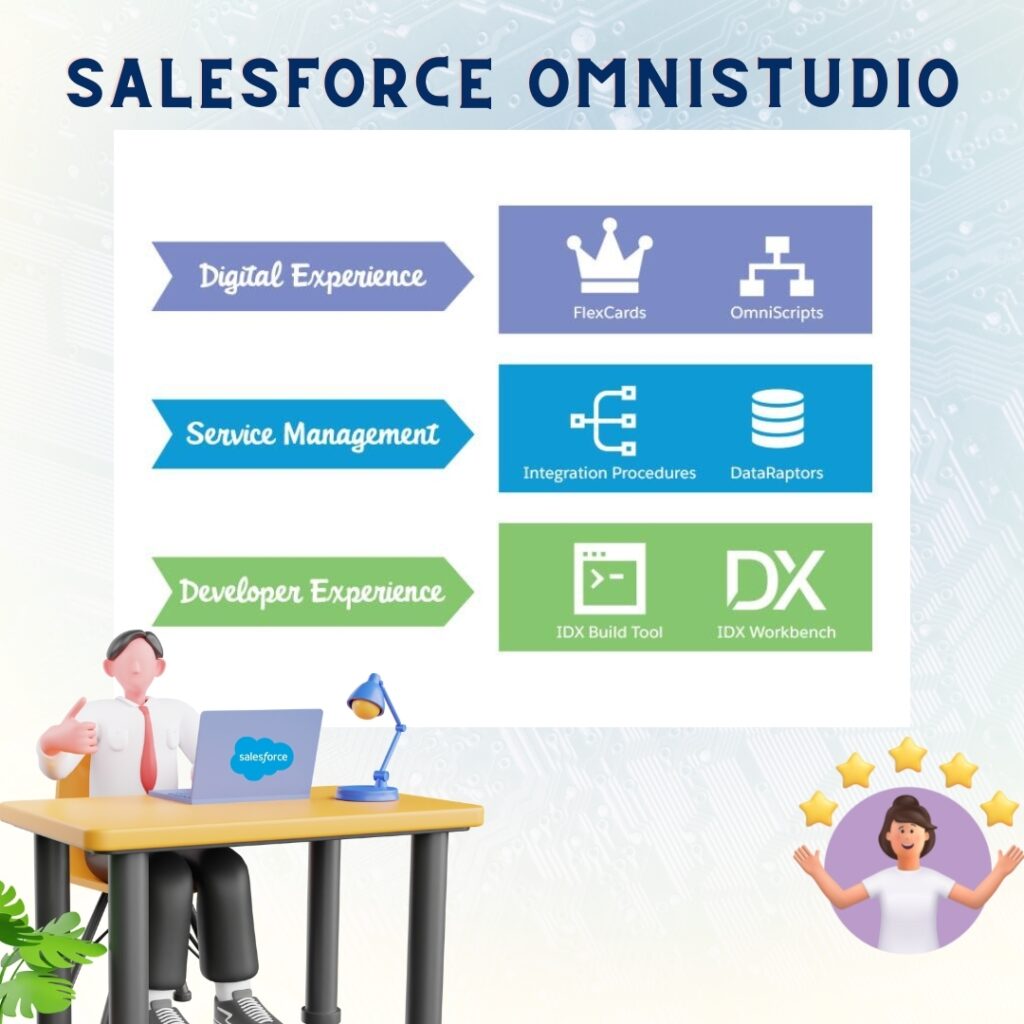OmniStudio is part of Einstein Automate, which integrates Salesforce automation capabilities across Platform, Einstein, MuleSoft, Industries, and AppExchange to deliver an efficient end-to-end workflow platform.
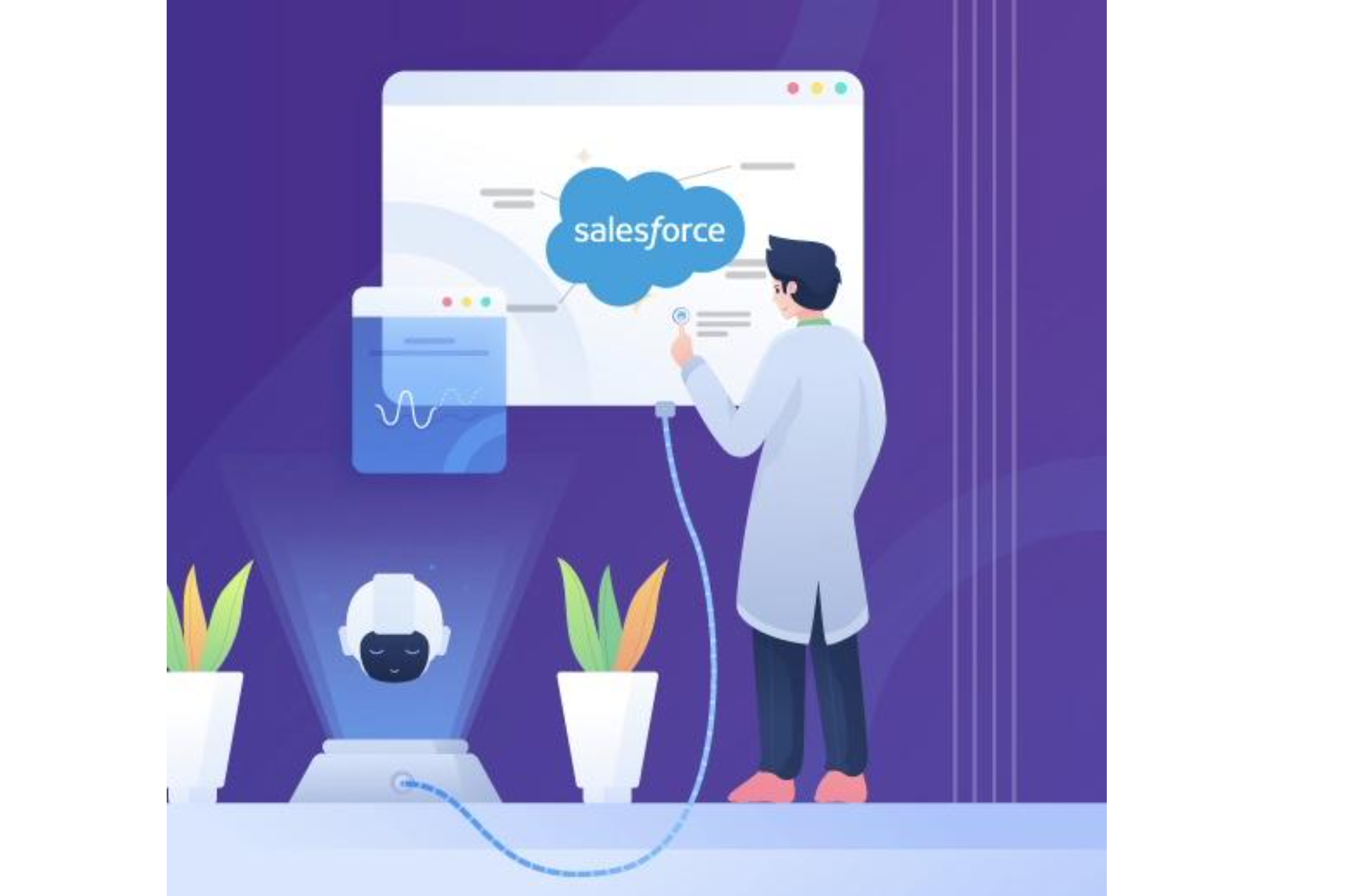
Are you stuck with technologies that work only on specific channels?
Are you finding a problem in keeping up with the constantly evolving products and
promotions?
Is managing high and volatile volumes of transactions challenging for you?
Are you confused by the complex rules and usability obstacles?
Are contrasting legacy systems giving you headaches?
Most organizations struggle to meet demands because of these challenges.
But, yes, there is a solution!
All Salesforce clients now have access to a set of configuration tools and resources.
OmniStudio is a modular framework that aids in creating reusable Salesforce solutions for particular industries. As a result, lengthy development times are significantly reduced when creating complex processes.
Customers may develop guided brand experiences tailored to their industry with clicks rather than proprietary code, thanks to OmniStudio’s drag-and-drop setup features. By deploying and upgrading these interactions across various devices and channels, they effortlessly match the demands of omnichannel service, boosting user productivity and enabling more self-sufficiency for partners, customers, and workers. Tools for interacting with other enterprise applications and data are also provided by OmniStudio.

Let’s examine the fundamental elements that enable this:
● Flex Cards
● OmniScripts
The Service Management layer
● OmniStudio DataRaptors
● OmniStudio Integration Procedure
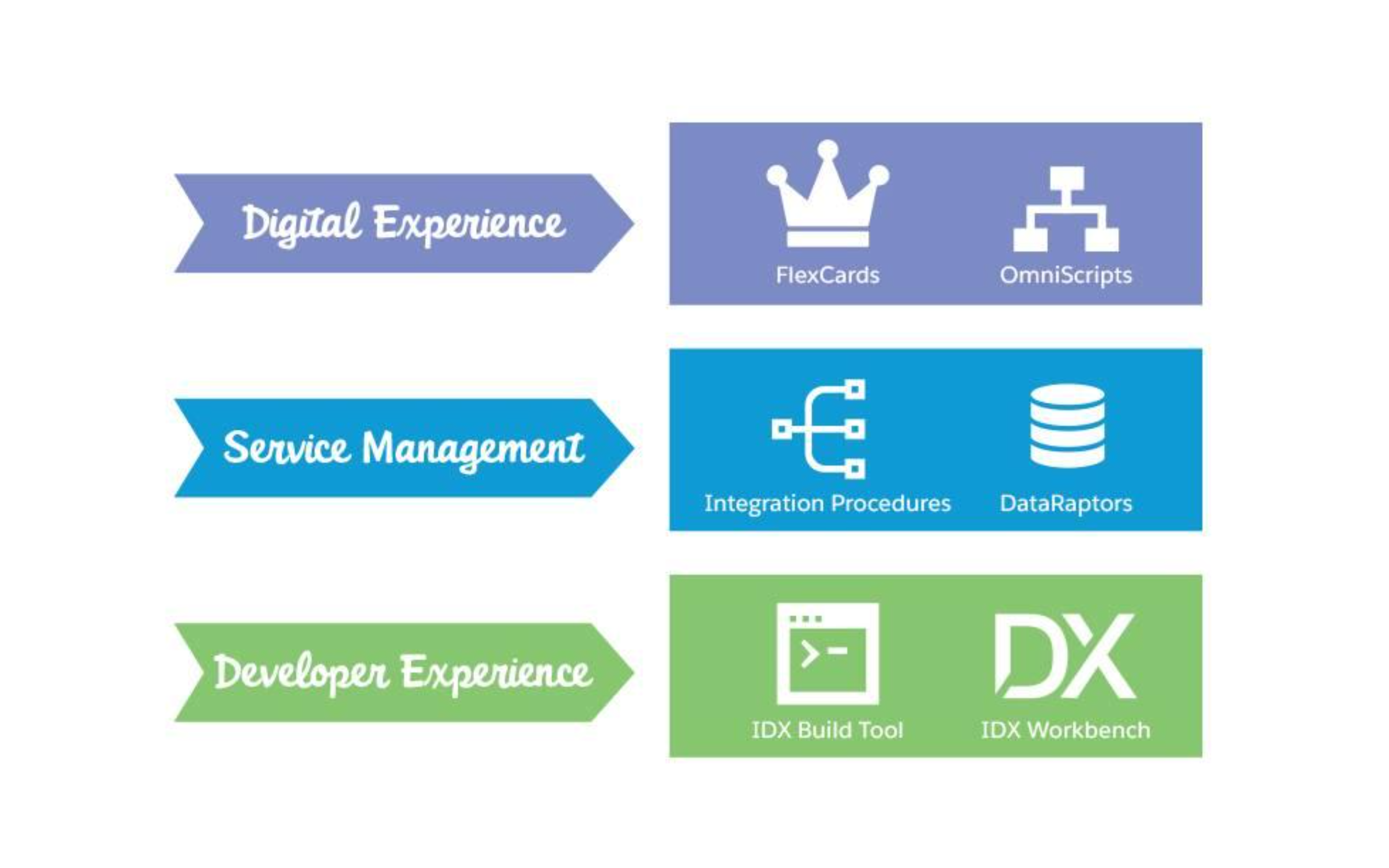
1.Flex Cards
FlexCards assemble contextual information from several sources and present it to consumers using any device. They can be easily configured with the aid of click-based components.
2. OmniScripts
Do you want to view and update contact information stored in Salesforce?
Do you want to view the service plan stored in a legacy database?
Do you like to view a bill stored in a billing system, and then select a specific way to
pay it?
This is easy utilizing OmniScripts!
OmniScript is a tool for explaining complex sales or service procedures to people. You can construct client interactions using a drag-and-drop editor by setting up specified sequences using its elements:
With the help of OmniScripts, it is possible to set up user-friendly, interactive business processes with branching, which allows for the display of various pages and groups of fields depending on the user’s selections.
What are OmniScripts?
An OmniScript is a customizable tool for providing a seamless customer experience that enables you to construct a guided path for completing a business transaction. An easy-to-use drag-and-drop editor lets you group different components, including actions (extract data, send email), functions (formulas), input fields, and branching logic, to construct OmniScripts. To receive an LWC component that you can deploy and activate via communities, object detail pages, and flashcards, you can enable the LWC on OmniScript.
Advantages of OmniScripts
1. Drag and drop using minimal or no coding
2. With built-in troubleshooting tools, rapid prototyping 3. Simple maintenance
4. Built-in branching capability
5. Incorporating information from nearly any source
6. Separating the front end’s
When to use OmniScripts?
1. Here are some instances where OmniScripts can be used.
2. Offer a logical approach to completing a business process.
3. Guide users through challenging activities.
4. To gather information for the implementation of a service.
5. A client goes through a sales process, such as selecting a new insurance policy. 6. It pertains to self-service interactions like troubleshooting.
OmniScript Designer
With Omniscript, there are different types of elements and ways they can be used.
Use of Element Type
Actions
For calling on other tools to carry out various tasks, such as obtaining or saving data, performing calculations, sending emails, etc.
Display
To improve the usability of the UI by showing text and images on the screen.
Functions
For calculating in OmniScript, displaying conditional messages, and supplying geolocation
Group
To group components on the UI
Inputs
For system or user input or selection
Omniscript
Reusable OmniScripts by inserting them.
3.OmniStudio DataRaptors
DataRaptors (Extract, TurboExtract, Load, and Transform), which access and transform data from Salesforce objects or other external sources with OmniStudio Integration Procedures being involved, are used to allow this feature. Data raptors aid in data manipulation. For instance, a user might be required to submit, edit, and save new information.
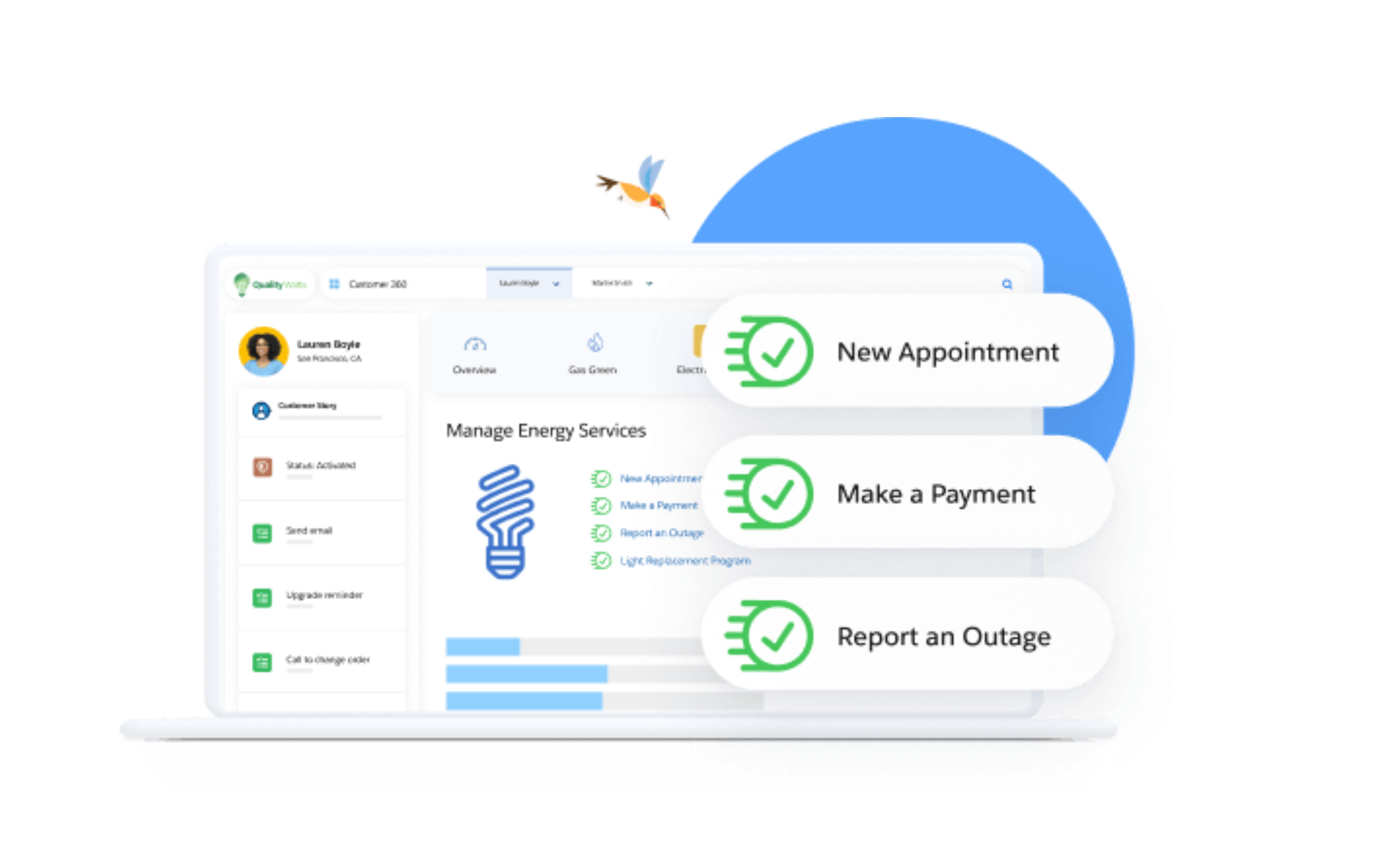
DataRaptors are quicker and simpler to maintain than Apex classes that carry out similar activities.
Key features of Data Raptors
1. Declarative object-to-object maps
2. Declarative JSON/Object Mapping
3. Hierarchical REST Interfaces
4. JSON and XML-based Transformations 5. Bulk Transaction Support
6. Denormalized Interface Objects
7. Declarative Data Source Management 8. OmniScriptTM and Cards
9. DocuSign Template Mapping
10. PDF Fill
4.OmniStudio Integration Procedure
IP is a click-based method for obtaining data from third-party services without further user involvement. You can reduce client/server calls and improve performance using server-side processing.
An API, OmniScript, or Apex method can access IPs.
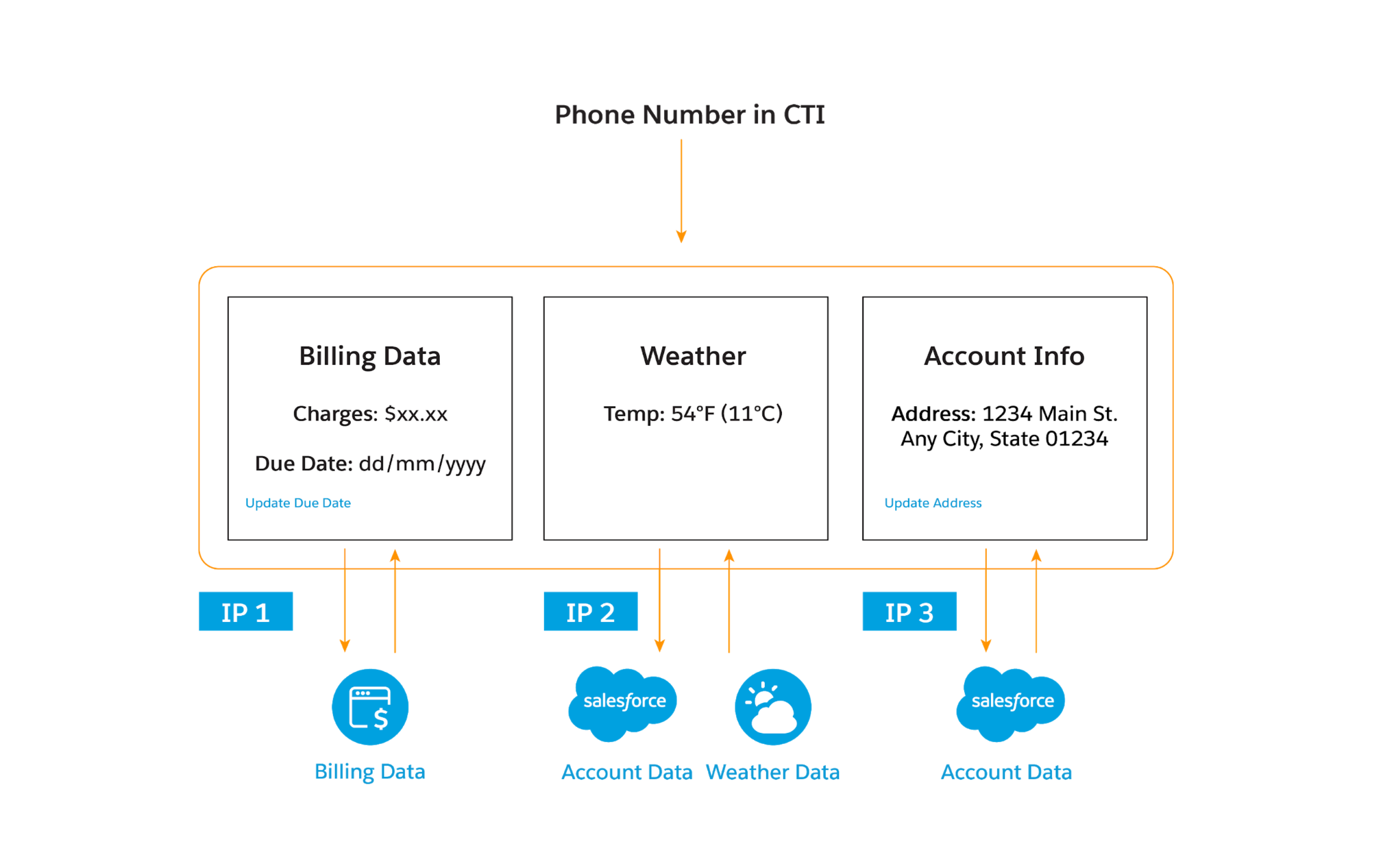
OmniStudio Tools vs. Custom Development

Time and scalability are two considerations when contrasting OmniStudio tools with creating a custom platform. OmniStudio offers greater chances for component reuse, streamlines complex development processes, and gives you time-saving shortcuts. It implies that outcomes can be attained rapidly and with fewer resources used.
That’s not all, either.
Advantages of OmniStudio that are important to note include the following:
Minimizing custom development while maximizing the speed of prototyping (LWC, Apex and tests)
The rapid transformation of a concept into a solution
Simple debugging: access to raw JSON data inspection and an embedded debugger for procedures
Simple elements of the structure
Versioning of code bases
Components with a conditional perspective, reactive variables.
The built-in components that OmniStudio provides for several businesses might offer a new perspective on established procedures like guided selling, CPQ, etc.
You should consider replacing some components in your Salesforce org with Omnistudio solutions since they can address any holes in the platform’s default functionality.
Impressive, isn’t it?
That’s a high-level look at OmniStudio’s overall architecture. Watch our video on this to uncover a little more about OmniStudio’s Digital Experience!
Let us know your thoughts!
For more blogs: https://areya.tech/blogs/
To know more: connect with us today!
Contact: [email protected]




